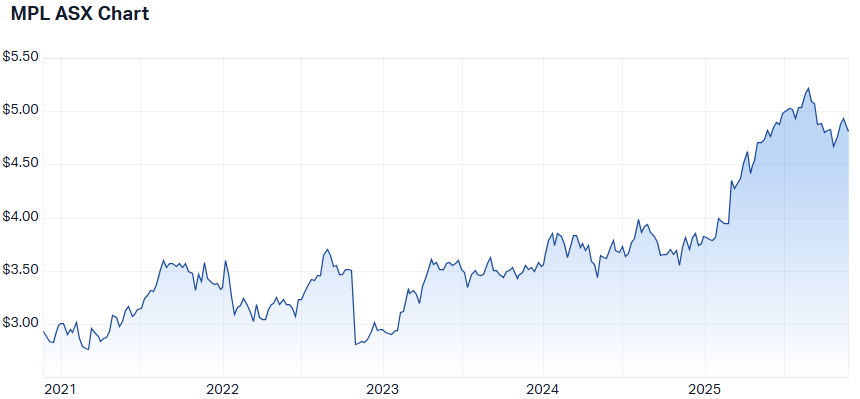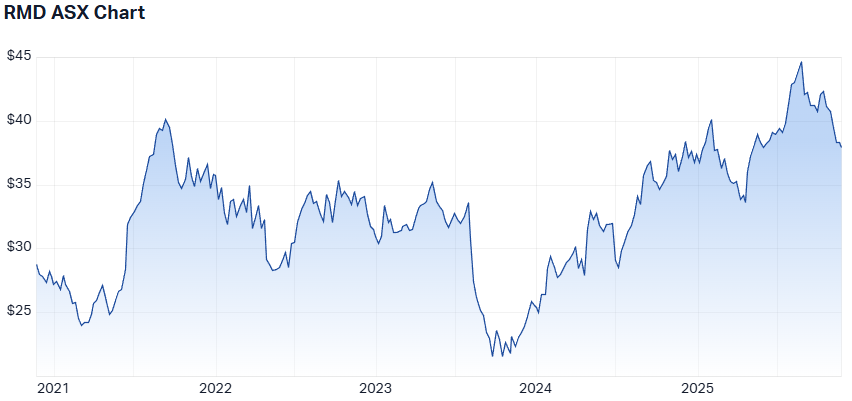2 stocks Anna Milne says are best placed for healthcare’s next chapter
While healthcare headlines often focus on breakthroughs or budget battles, the real drivers of the next decade are slower, larger, and far more structural.
Among those forces, none looms larger than demographics, a shift that is quietly reshaping demand, delivery models, system capacity, and long-term investment returns.
Over the past week, I’ve been speaking with specialists across key sectors to understand how long-run forces are transforming the investing landscape.
I’ve spoken with Dr David Walsh and Dr Wang Chun Wei from RQI on the AI and technology front, and with ClearBridge’s Michael Slack on the materials side.
In the healthcare domain, my conversation with Anna Milne from Wilson Asset Management offered a timely perspective on how demographic pressures are redefining the sector.
“Australia already spends more than the OECD average as a percentage of GDP on healthcare, yet this figure will continue to rise. This is not a choice; demand is increasing, and only so many funding cuts can be found before the broader health system faces significant consequences.”
That single line is the anchor point for the decade ahead. Milne argues that healthcare is moving beyond a funding debate and into a capacity-and-delivery challenge.
The combination of an ageing population, rising chronic disease burden, workforce strain and shifting patient expectations is driving a fundamental rethink of where care happens, who delivers it, and which business models will generate sustainable returns.
Across biopharma, devices, aged care and primary care, Milne sees demographic inevitability creating both pressure and opportunity. Private operators face margin constraints and capital intensity; outpatient and community-based care models continue to gain momentum; and medical devices, with their pricing power, stand out as long-run earnings winners.
We covered the segments gaining the strongest demand tailwinds, the business models with real pricing strength, the technologies shifting care delivery, and the companies Milne sees as decade-long winners. The analysis that follows captures these themes and the investment insights they reveal.

Ageing populations reshape demand across every corner of healthcare
Milne believes the single biggest force shaping the next decade is utilisation.
“The immediate impact of an ageing population is a surge in utilisation, as an ageing population requires more healthcare goods and services on a more regular basis.”
This surge touches every segment: pharmaceuticals, medical devices, aged care, pathology, primary care, and hospitals.
She notes that biopharma will see rising demand in areas such as cardiovascular disease and oncology, “where age is a major risk factor,” while orthopaedics and other device-heavy categories benefit from older patients’ higher procedure rates.
Services from aged care to hospitals will experience the most dramatic uplift, but Milne stresses that these models must evolve: “Care models need to evolve to ensure the system can not only cope but also generate sustainable returns.”
She adds that biopharma and devices are “higher-margin industries and well-positioned to benefit from demand tailwinds over the coming decade,” whereas labour-intensive services face mounting constraints.
Business models with true pricing power: why medical devices stand out
Asked which business models are best positioned for a decade of long-run earnings growth, Milne said:
“Medical devices, by process of elimination, have the greatest pricing power.”
She explains that pharmaceuticals remain bound to regulated fee schedules and political oversight: “Pharmaceuticals are under the spotlight in the US for Most Favoured Nation clauses,” which limit pricing freedom.
Health services, too, have struggled: “Pathology has been subject to funding cuts globally in recent years - Australia, the US, Germany.”
Meanwhile, devices, though regulated, have shown far more room to protect and expand margins. Milne says they are “generally able to recover costs and successfully implement gross margin improvement initiatives with less scrutiny.”
Her conclusion is clear: “Medical devices’ pricing power combined with demand tailwinds sets them up well for strong long-term earnings growth.”
A rising share of GDP and unavoidable government pressure
Milne is clear that Australia’s healthcare spending will keep rising, not because governments choose to expand it, but because demographic demand makes restraint impossible.
She argues that the system has already reached the limits of cost-cutting, and that any further attempts to squeeze funding “risk significant consequences” for care quality and system capacity.
Private investment, she notes, remains structurally challenged. “It is already difficult to encourage private capital to invest in healthcare services, as returns are not adequate for the investments required.”
The government’s decision not to intervene during Healthscope’s administration or mediate negotiations between private hospitals and insurers reinforced the signal that private operators should not expect support.
Yet public-facing healthcare policy continues to move in the opposite direction. Milne points out that affordability initiatives remain politically popular, highlighting the Labor government’s commitment to $8.5 billion in additional Medicare bulk-billing incentives over four years.
This creates a split landscape: constrained economics for private providers, but rising expectations and political pressure to expand public access and affordability.
The shift to outpatient and home-based care accelerates
Among all structural changes, Milne sees one trajectory as firmly established: the shift away from inpatient care. “Private hospital overnight volumes are at the same level in 2025 as they were in 2019,” she says, while “day volumes are up more than 20% on 2019.”
She quantifies the shift even more starkly: “Private hospital bed utilisation has fallen from 86% in 2010 to 64% in 2025.”
She attributes this to both cost and outcomes:
“The day procedure and outpatient care model is clearly winning favour and for good reason: it is less costly and has been shown to improve clinical outcomes.”
For investors, this means traditional capex-heavy hospital models are losing economic attractiveness.
“The traditional capex programs of years past are not delivering the returns they once did… current market capacity needs to be reshaped, but this will require further investment, which is unlikely in the near term.”
Milne’s decade-long outperformers: Medibank and ResMed
Milne names Medibank (ASX: MPL) as a long-term structural winner.
“Medibank operates a best-in-class private health insurance business, which will only become more important with an ageing population.”
She expects mid-single-digit earnings growth over the decade. But she believes the real opportunity lies in Medibank’s ambition to reshape care models.
“They are aiming to shift the focus of care models away from treatment to prevention, from hospital to community and from analogue to digital.”
She highlights its acquisition of Better Medical as evidence of this strategy.

Her second high-conviction pick is ResMed (ASX: RMD).
“ResMed continues to deliver strong results quarter after quarter,” Milne says, supported by an under-penetrated market and strong margin expansion.
She sees ongoing upside from “further supply chain optimisation” and notes that the company is “increasing the velocity of product launches, growing the Direct to Consumer channel, and using technology to drive adoption and subsequent adherence.”
Trading at a discount to its long-term average, she concludes: “We believe ResMed is a compelling buy.”

4 topics
2 stocks mentioned
1 contributor mentioned

